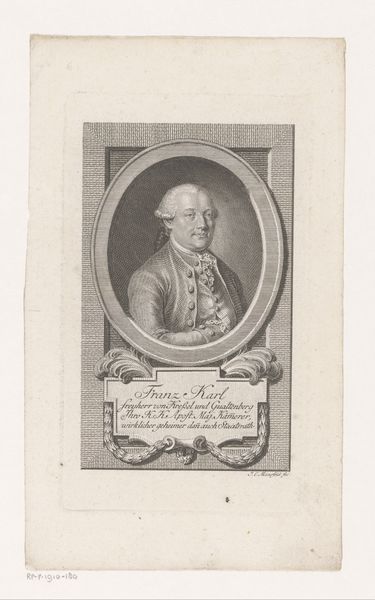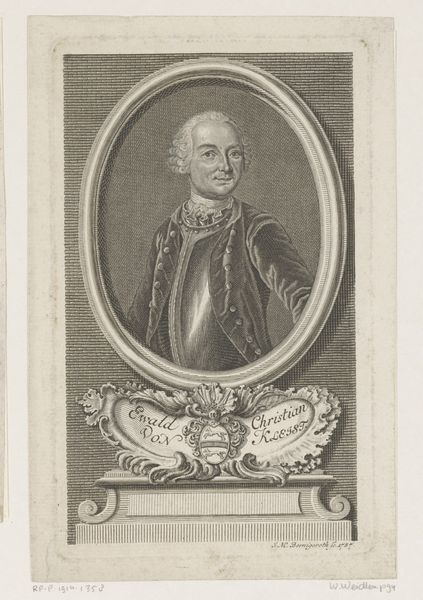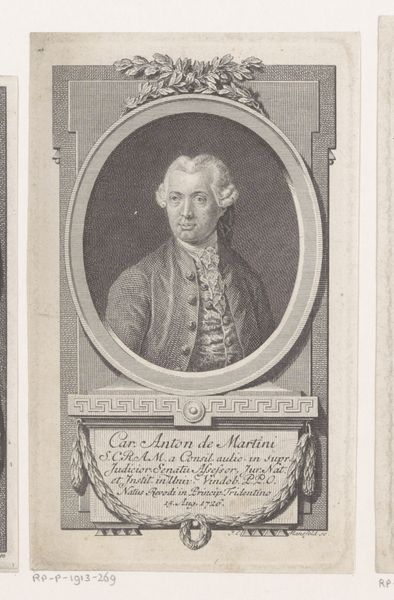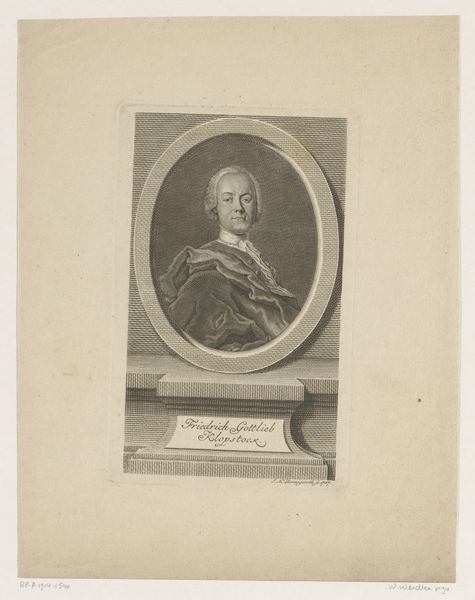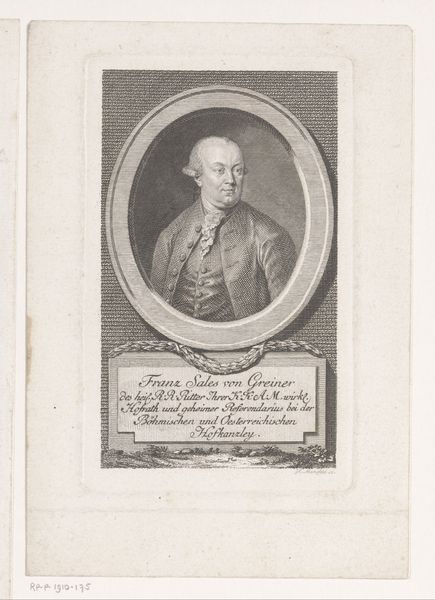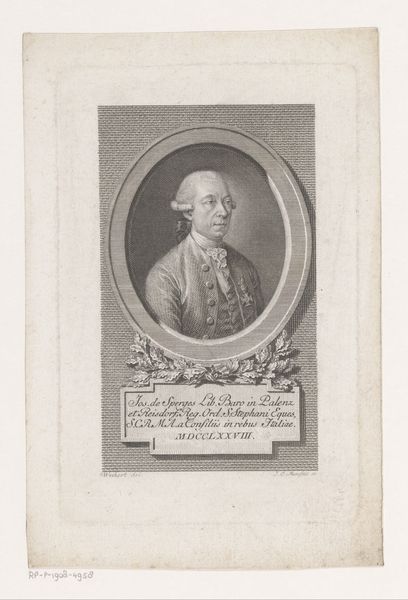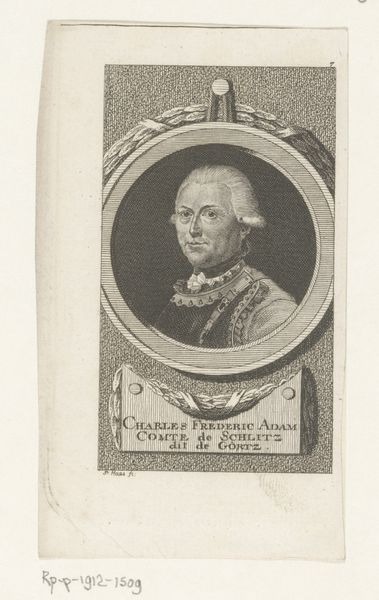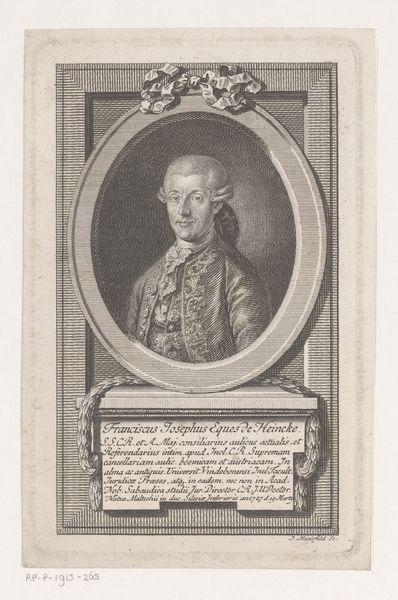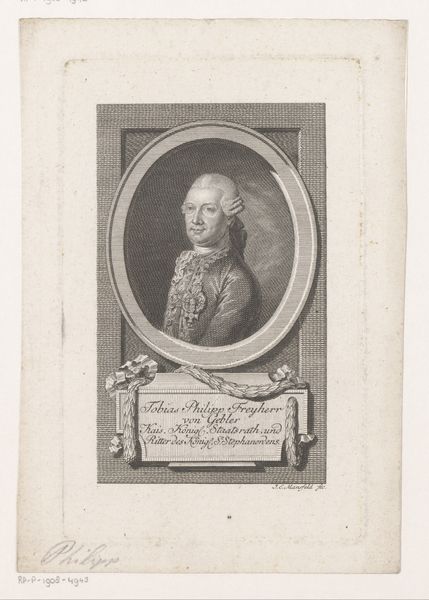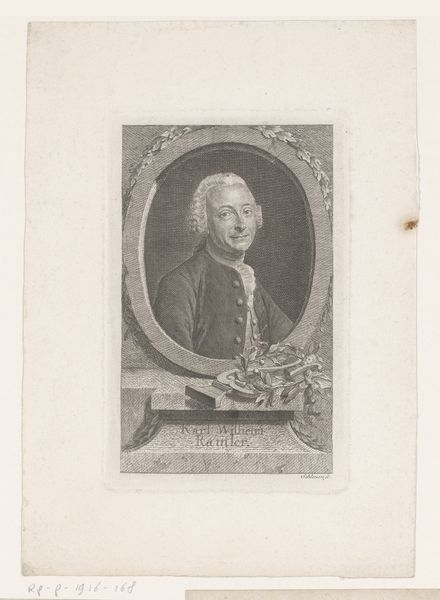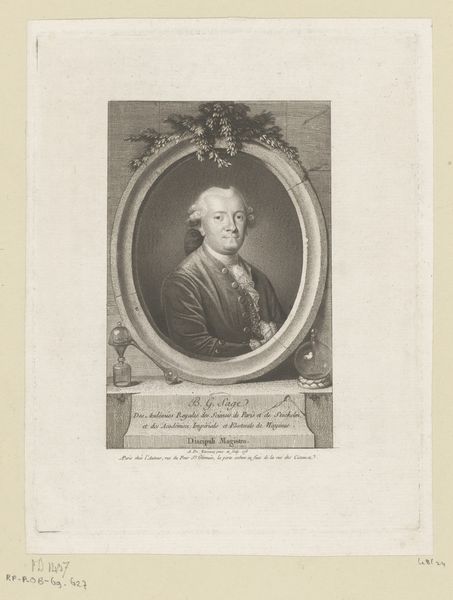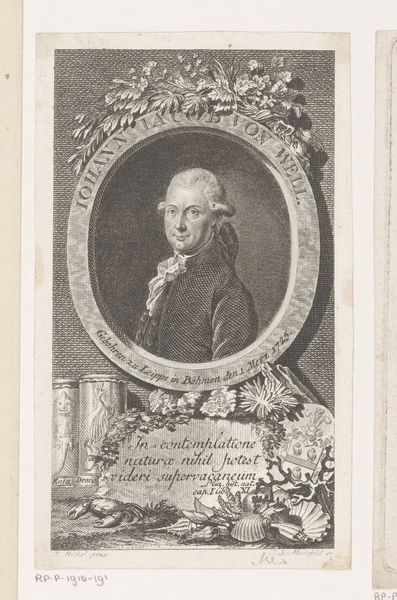
Dimensions: height 174 mm, width 101 mm
Copyright: Rijks Museum: Open Domain
Curator: We're looking at a print titled "Portret van Anton von Störck," created in 1773 by Johann Ernst Mansfeld. It’s an engraving. What strikes you most about this work? Editor: The detail, for one. The textures are amazing. And the text gives a formal introduction. I guess it’s like a highly stylized ID. I am curious to know more about its function back then? Curator: It functioned as a visual representation but also carried specific cultural and social meanings. In the 18th century, engravings like this circulated widely and acted as a form of social currency. They could elevate someone’s status, much like an official portrait today. This particular print celebrates Anton von Störck who was a prominent figure. Note how the laurel wreath above signifies achievement and status, framing the face in a way that mimics the framing by royal favor. Editor: So it's about carefully crafting and distributing a particular image? Kind of like…propaganda, but for the elite? Curator: That's a fair observation. We have to consider how images contribute to constructing social hierarchies and reinforcing power structures. By creating and distributing these portraits, elites were shaping public perception and controlling their narrative. Do you notice the placement of the inscription? Editor: It sits right beneath the portrait and repeats "Störck". How strategic. Curator: Exactly! And think about how prints like this would have been displayed—in homes, libraries, even public spaces—further amplifying the subject’s influence. This isn’t just a portrait; it’s a statement of power and a carefully managed public image. Editor: I never thought about portraiture that way. I guess seeing it just as a depiction of a person is way too simple. I’ll have to start digging deeper! Curator: Exactly. It’s a reminder that art always exists within a social, political, and economic context.
Comments
No comments
Be the first to comment and join the conversation on the ultimate creative platform.
